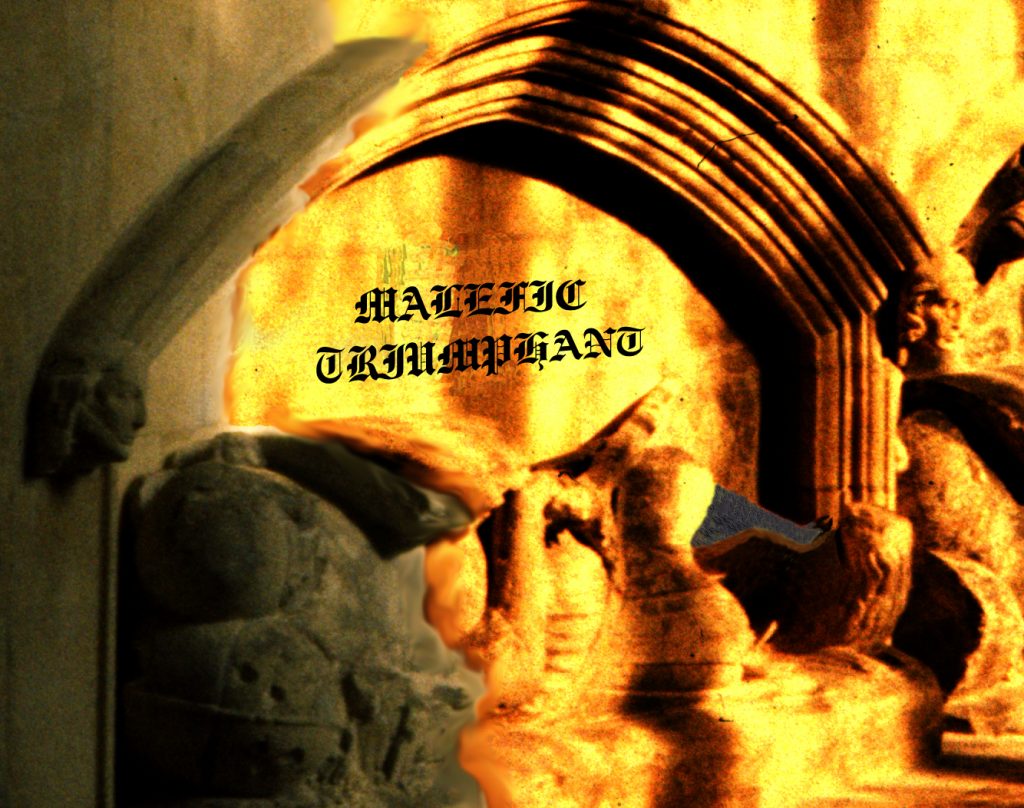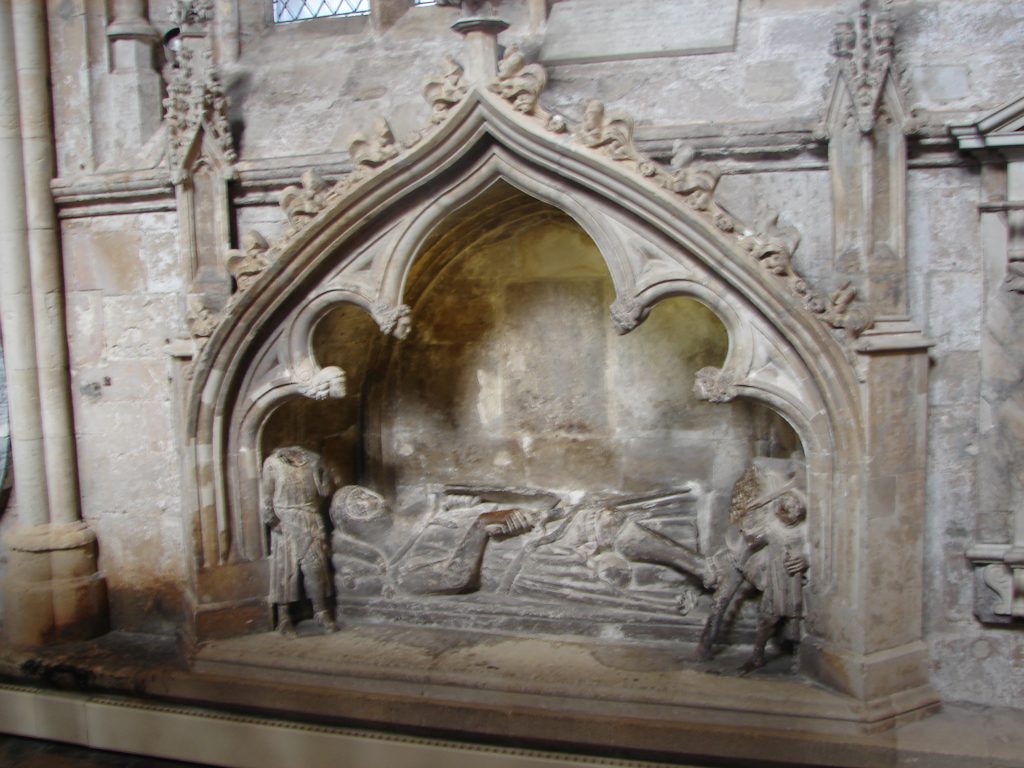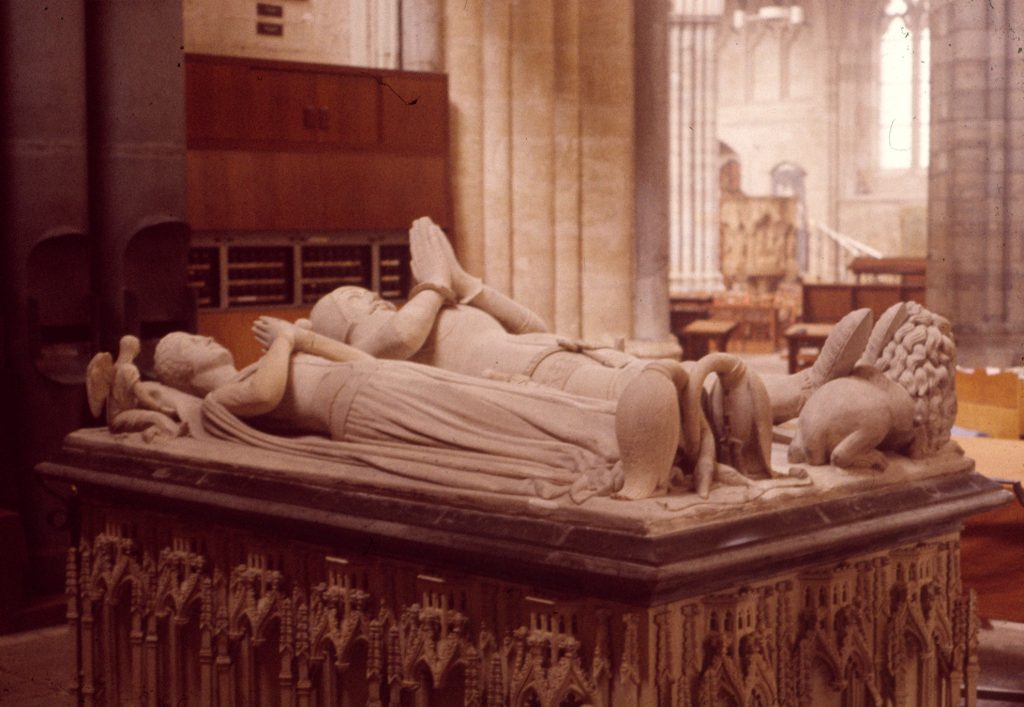Recently I have been discussing various topics found in my West Country Medieval Mystery Series featuring my heroine, the Lady Apollonia of Aust. This month, let us consider medieval tomb effigies which survive and play a role in some of my stories. Effigies are carved recumbent figures representing deceased persons, lying full-length on top of the tomb.
My very first novel, Effigy of the Cloven Hoof, has “effigy” in its title. The image at the top of this page is shown on the cover of the paperback edition. It was obtained from the picture just below, taken in the South Aisle of Exeter Cathedral, by cropping the effigy on the left side, modifying the effigy to have a cloven hoof, and replacing the sign above the effigy with the motto, “Malefic Triumphant”. The fictional effigy in my story was discovered by Lady Apollonia in a village church in Somerset.
The Plague or Black Death was a catastrophic series of diseases in England, starting in the mid-14th century. My third novel, Memento Mori, is set in Gloucester in 1392. The cover of the paperback version shows the head of the effigy in the picture below this paragraph. It is the effigy of a transi tomb in the North Aisle of Exeter Cathedral. Such tombs were a reaction to the Black Death in England and throughout Europe showed the decay of the body after death. The title of my book literally means to illustrate “remember that you must die”.
One of my first encounters with such a tomb was in Tewksbury Abbey in Gloucester shown below. I am examining such a tomb effigy showing a decaying body, set in stone. Such representations were meant as a reminder that as the viewer lives, he or she will eventually perish and decay as shown in such effigies.
Lady Apollonia was overwhelmed with death at the beginning of Memento Mori, having lost her third husband and her second son, the latter dying of plague while on Crusade with the Teutonic Knights. As she tries to work through her grief, she seeks to develop an appropriate tomb for her son. Again, I used a tomb effigy in Exeter Cathedral, shown below, as my inspiration for that tomb. This effigy includes her son’s beloved horse and the loyal squire who served him so well.
 Effigies developed over the centuries. The oldest one in Exeter Cathedral is from the 11th century and depicts the first Bishop of Exeter when the seat of the bishop was moved from Crediton to Exeter. You will note that this effigy, shown on the left, is much flatter than the later examples shown above. Over the centuries, the bodies became three dimensional and more realistic.
Effigies developed over the centuries. The oldest one in Exeter Cathedral is from the 11th century and depicts the first Bishop of Exeter when the seat of the bishop was moved from Crediton to Exeter. You will note that this effigy, shown on the left, is much flatter than the later examples shown above. Over the centuries, the bodies became three dimensional and more realistic.
An important aspect of medieval tomb effigies for modern viewers is that they often reveal much about the clothing of the period which they represent. The final picture in this posting shows a tomb in the South Transept of Exeter Cathedral, depicting a 14th century aristocratic couple from the Courtenay family of Devon, England. One of their descendants is Charles Courtenay who is the current Earl of Devon. The man in this effigy is dressed as a medieval knight in armor while his lady beautifully displays developments in female garments so characteristic of the 14th century.
I hope to see you next month.





